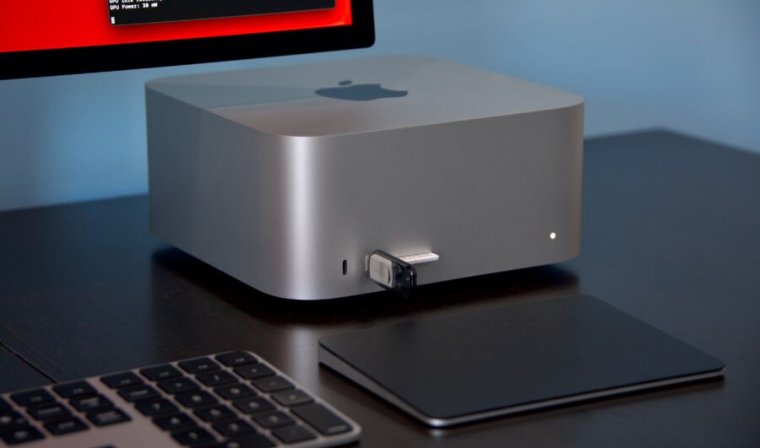
If rumors are to be believed, Apple has had to scale back its ambitions for the Apple Silicon Mac Pro. A planned performance-boosting "M2 Extreme" chip has supposedly been canceled, and some of the perks people normally associate with the Mac Pro—upgradeable RAM and graphics—likely won't be supported because of the way Apple Silicon chips are designed.
Which leaves us with, if the most recent rumors are accurate, a high-end Mac Studio with user-accessible storage slots stuffed into the current neo-cheese-grater Mac Pro tower design.
That doesn't leave much space between the Mac Studio and the Mac Pro—little enough that the Mac Pro could have trouble justifying its continued existence and price premium. One possible solution, as reported by Bloomberg's Mark Gurman: Apple could simply skip an M2-generation refresh for the Mac Studio entirely, leaving more of a performance gap between the still-M1-based Studio models and an M2-based Mac Pro.
"It wouldn't make sense for Apple to offer an M2 Ultra Mac Studio and M2 Ultra Mac Pro at the same time," Gurman writes in his newsletter (via MacRumors). "It's more likely that Apple either never updates the Mac Studio or holds off until the M3 or M4 generation. At that point, the company may be able to better differentiate the Mac Studio from the Mac Pro."
While Gurman is usually in a position to know these things, it's worth noting that he hedges this prediction as more of a guess, rather than attributing it to any specific source at Apple or one of its suppliers. It's certainly not an ironclad guarantee that there will be no M2 version of the Studio.
Whatever Apple ends up doing, it's clear that the Apple Silicon era isn't changing anything for Apple's desktop users—it's still hard to know when to expect hardware updates, and it's hard to predict what you'll get when they do arrive.
The M2 Mac mini showed up six months after the M2 versions of the MacBook Air and 13-inch MacBook Pro, though the M1 versions of all three Macs were announced simultaneously. The 24-inch iMac (creeping up on its second birthday) may not get an M2 version at all, and there's still conflicting evidence about whether Apple is planning a larger Apple Silicon iMac to replace the 27-inch Intel model or the iMac Pro. The new Mac Pro has already blown Apple's original two-year Intel transition timeline. It's all considerably less predictable than the iPhone's every-single-September launch schedule (it helps that new iPhones can make or break Apple's quarterly financial reports and new Macs, generally, cannot).
This inconsistency is almost certainly justified by Mac desktop sales numbers; Apple doesn't break out Mac laptop and desktop sales in its financial reports, but it's a fair bet that the laptops outsell the desktops. Given a limited number of chips and finite capacity for designing and manufacturing new products, it makes sense to prioritize laptops. That's especially true of Macs with Apple Silicon chips, which because of their power efficiency, generally perform the same way regardless of whether they're in a laptop or desktop.
That doesn't make the long, uncertain wait between refreshes any easier for people who need or prefer a desktop setup. If you decided against ordering an M1 Studio recently because you wanted to wait for the latest and greatest model, a new Mac Pro might include features you don't want or cost more than you want to spend, and the M2 Mac mini (as much as we liked it) might not offer everything you're looking for. You can either get a solid deal on a refurbished M1 Mac Studio, or you can wait and hope that Apple eventually decides to release a desktop that does exactly what you want it to.
reader comments
163